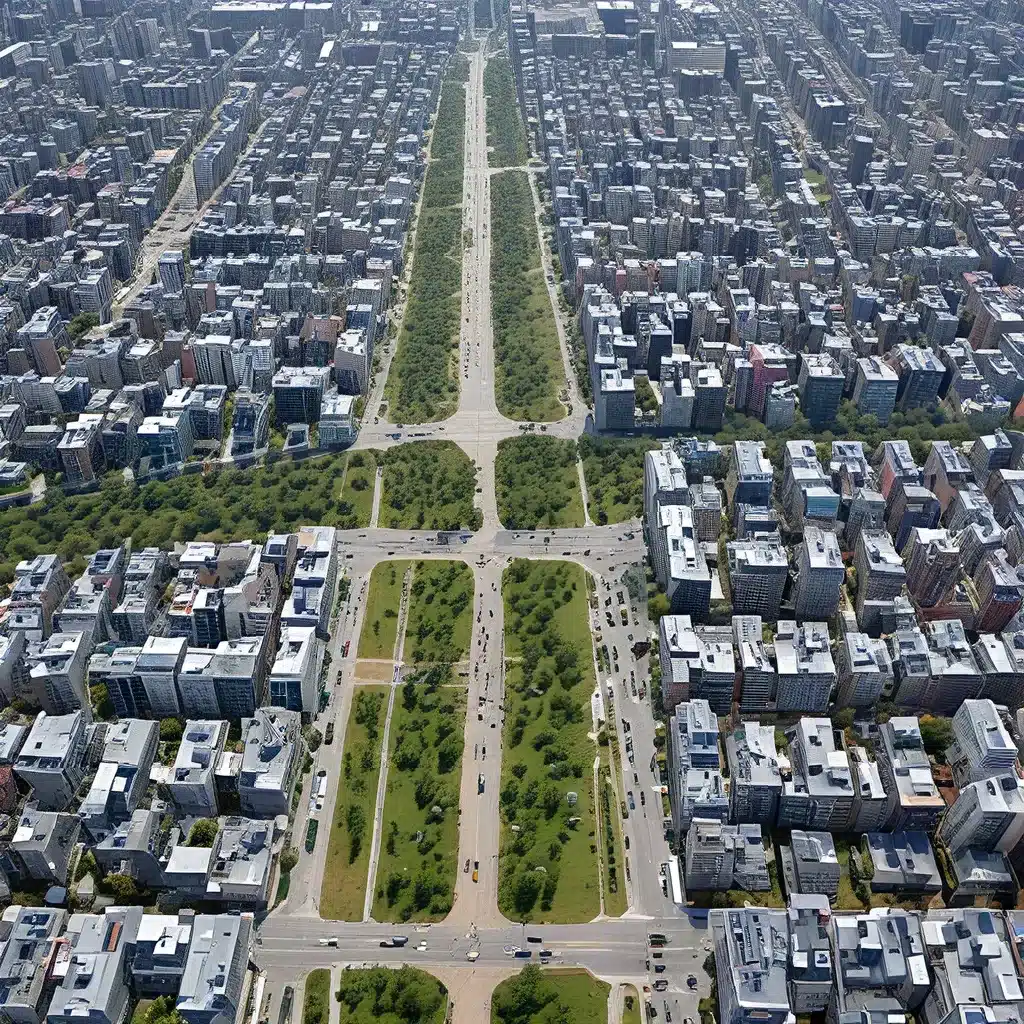
As an avid advocate for clean energy and sustainable living, I’ve been keeping a close eye on the remarkable advancements happening in the world of urban planning and renewable energy integration. It’s no secret that our cities are the heart of global pollution and carbon emissions, but I’m thrilled to see municipal leaders stepping up to the challenge and exploring innovative ways to transform our urban landscapes into shining examples of environmental stewardship.
What exactly does this urban green revolution look like? Well, buckle up, my friends, because I’m about to take you on a fascinating journey through the cutting-edge intersection of alternative energy and city planning. From electric vehicle infrastructure to green roofs and horizontal elevators, the future of our urban centers is looking brighter and more sustainable than ever before.
The Rise of Renewable-Powered Cities
Let’s start by addressing the elephant in the room: cities are responsible for over 60% of all greenhouse gas emissions worldwide. That’s a staggering statistic, and it’s no wonder that municipalities around the globe are scrambling to find solutions. Luckily, the renewable energy industry is rising to the challenge, offering a myriad of innovative technologies and strategies to help cities reduce their carbon footprint.
One of the most exciting developments I’ve seen is the growing number of cities that are generating the majority of their energy from renewable sources. Take a place like Seattle, Washington, for example – they’ve managed to tap into a diverse mix of wind, solar, hydro, and biomass to replace their reliance on fossil fuels. And they’re not alone; cities like Prince George, British Columbia and Reykjavik, Iceland are also leading the charge in this renewable revolution.
But it’s not just about the energy sources powering our cities; it’s also about how we’re incorporating those technologies into the very fabric of our urban landscapes. I’m particularly intrigued by the plans in Reykjavik to convert their entire public fleet into one free from fossil fuel use, replacing it with electric vehicles and the necessary charging infrastructure. This is a bold and ambitious move, but it’s one that’s been made possible by the rapidly advancing renewable energy industry.
Innovative Solutions for Sustainable Cities
Of course, alternative energy integration in urban planning goes far beyond just electric vehicles and solar panels. Cities around the world are exploring a whole host of cutting-edge solutions to make their communities more sustainable and efficient.
Take, for example, the concept of green roofs. These roofs, composed of living foliage and plant matter, not only help reduce the urban heat island effect but also provide natural cooling for the buildings themselves. It’s a brilliant example of how we can harness the power of nature to combat the challenges of modern urban living.
And then there’s the idea of horizontal elevators, or monorail systems, that are being explored in some cities. These innovative transportation solutions could help reduce downtown congestion and the associated energy waste and emissions, all while providing residents with a quick and efficient way to get around.
But the innovations don’t stop there. Automated vacuum collection systems (AVACS) are already proving their worth in cities like Norway, France, and China, eliminating the pollution created by garbage truck emissions and allowing for more effective and sustainable waste management. And the rise of off-grid housing developments, powered by a combination of renewable technologies, is giving communities the opportunity to achieve true self-sustainability.
The Path to a Greener Future
As exciting as all these developments are, I know that we still have a long way to go before we can truly achieve a zero-carbon city. But the good news is that the momentum is building, and more and more communities are taking decisive action to incorporate alternative energy into their urban planning strategies.
All around the globe, time and money are being devoted to clean energy options for municipal growth, with a variety of regulations and incentives in place to steer development towards a greener future. And it’s not just governments and policymakers driving this change – businesses and individuals alike can play a vital role by supporting these practices through voting, donations, and more.
So, what’s the takeaway here? Well, I believe that the future of our cities is inextricably linked to the rise of renewable energy and sustainable urban planning. By embracing innovative technologies, rethinking our transportation and waste management systems, and harnessing the power of nature, we can work towards creating cleaner, more efficient, and more livable cities that set the standard for a sustainable future.
And you know what? I’m not just hopeful – I’m downright excited to see what the next chapter of this renewable energy revolution holds. After all, as they say, the future is bright, and it’s powered by the sun, the wind, and the ingenuity of urban planners and clean energy pioneers. So, let’s keep our eyes on the horizon and continue to push the boundaries of what’s possible. The journey to a greener, more sustainable world starts right here, in our very own cities.

